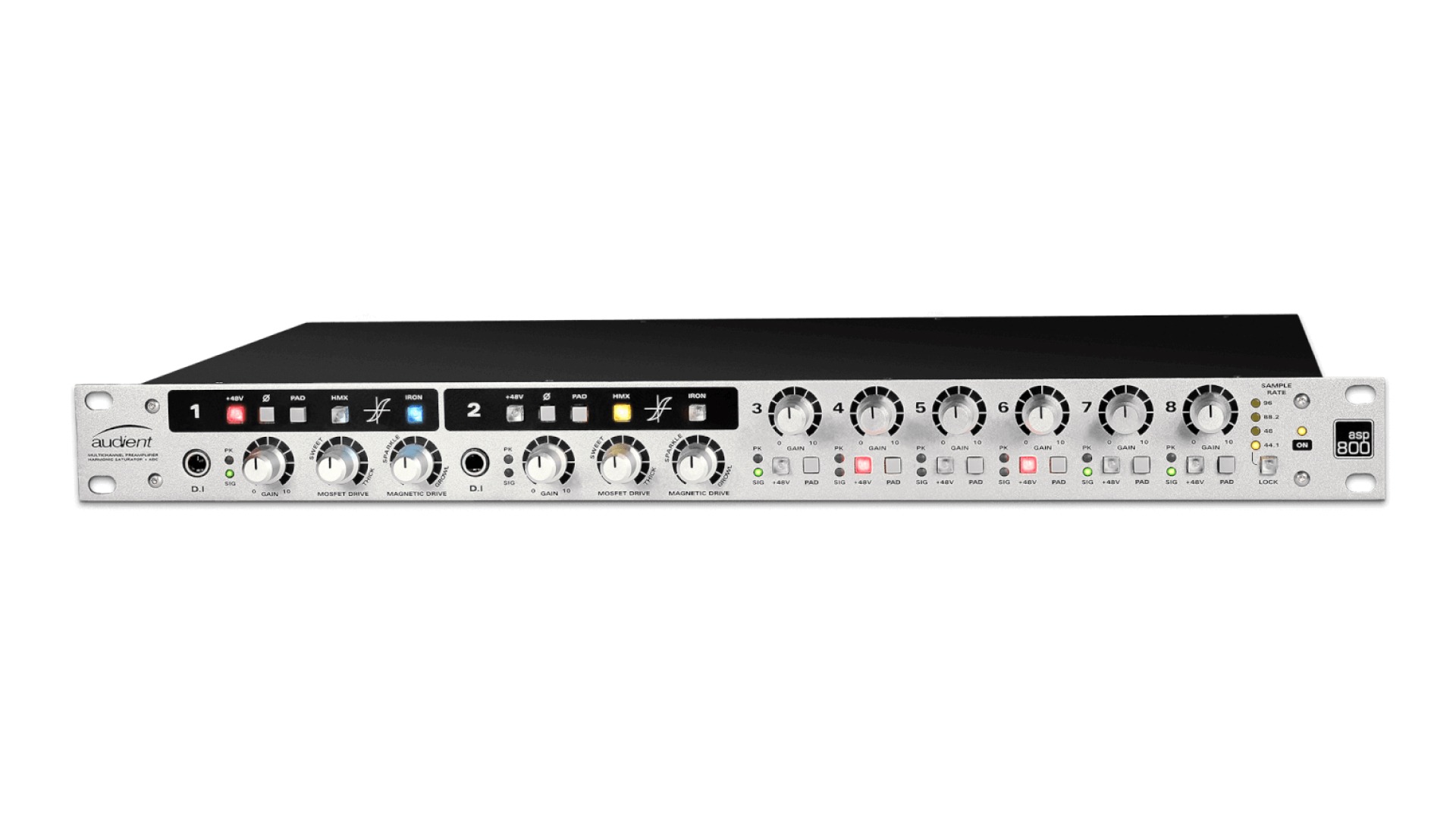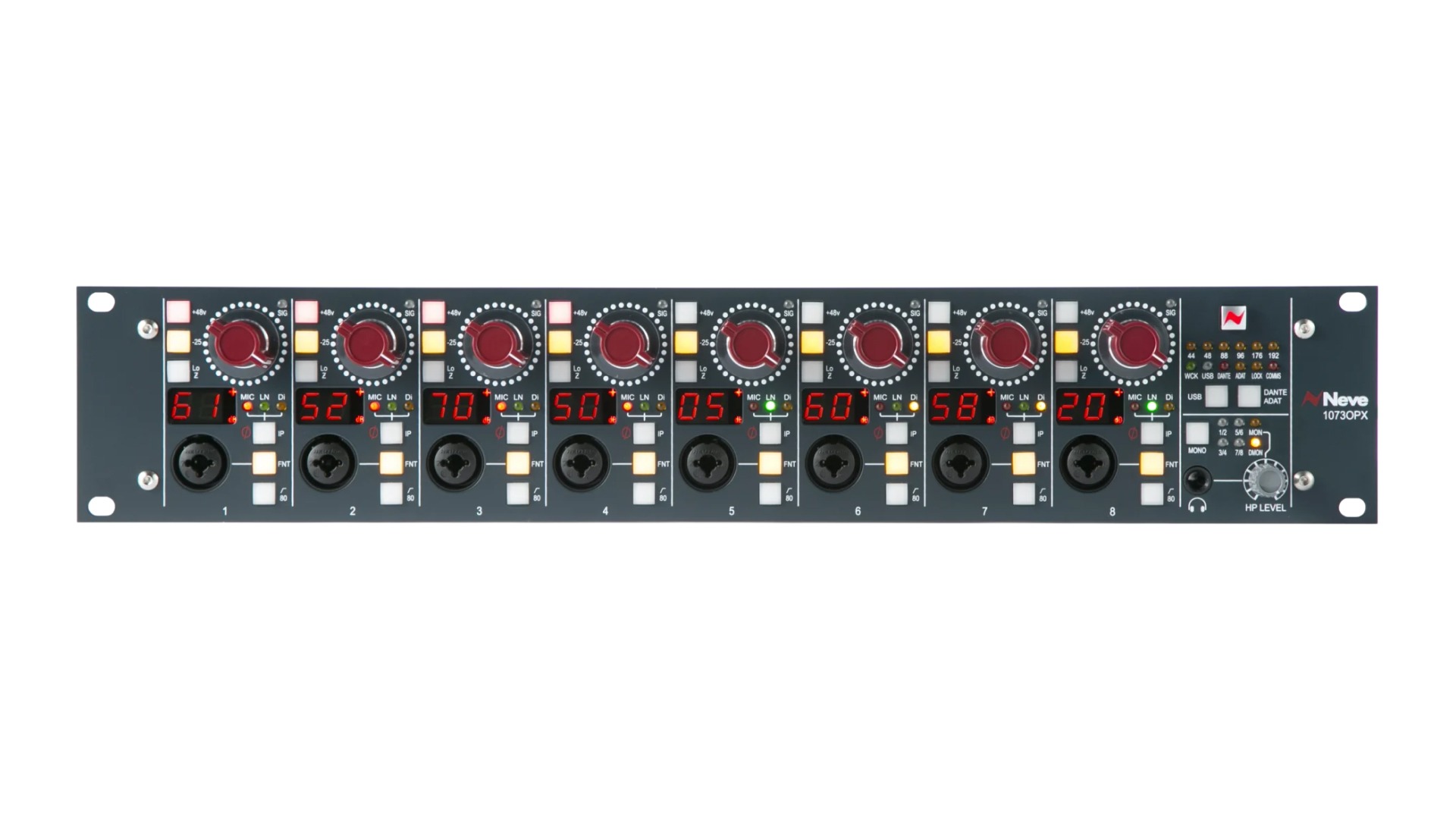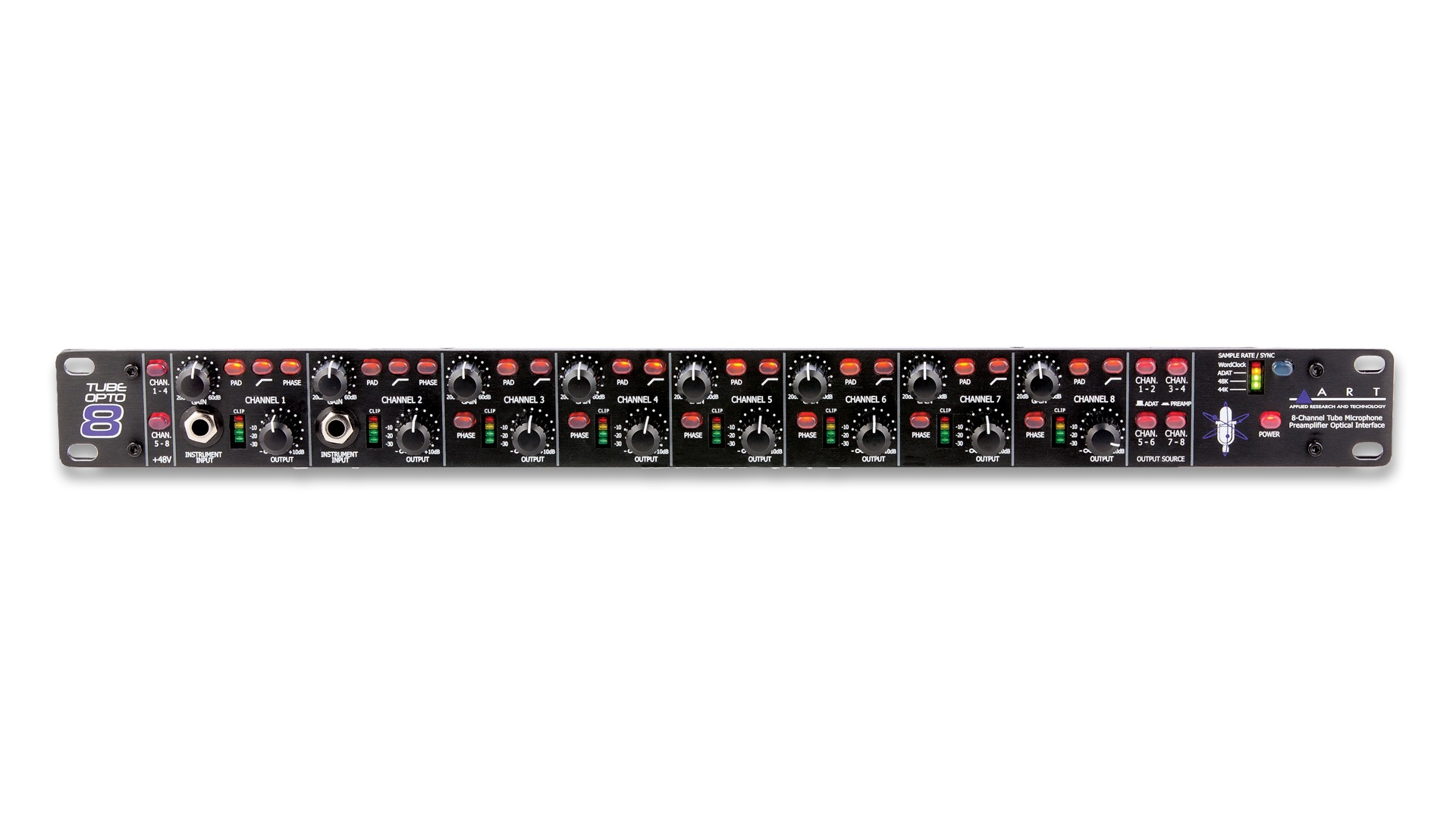
What is ADAT? How to Add Channels to Your Audio Interface
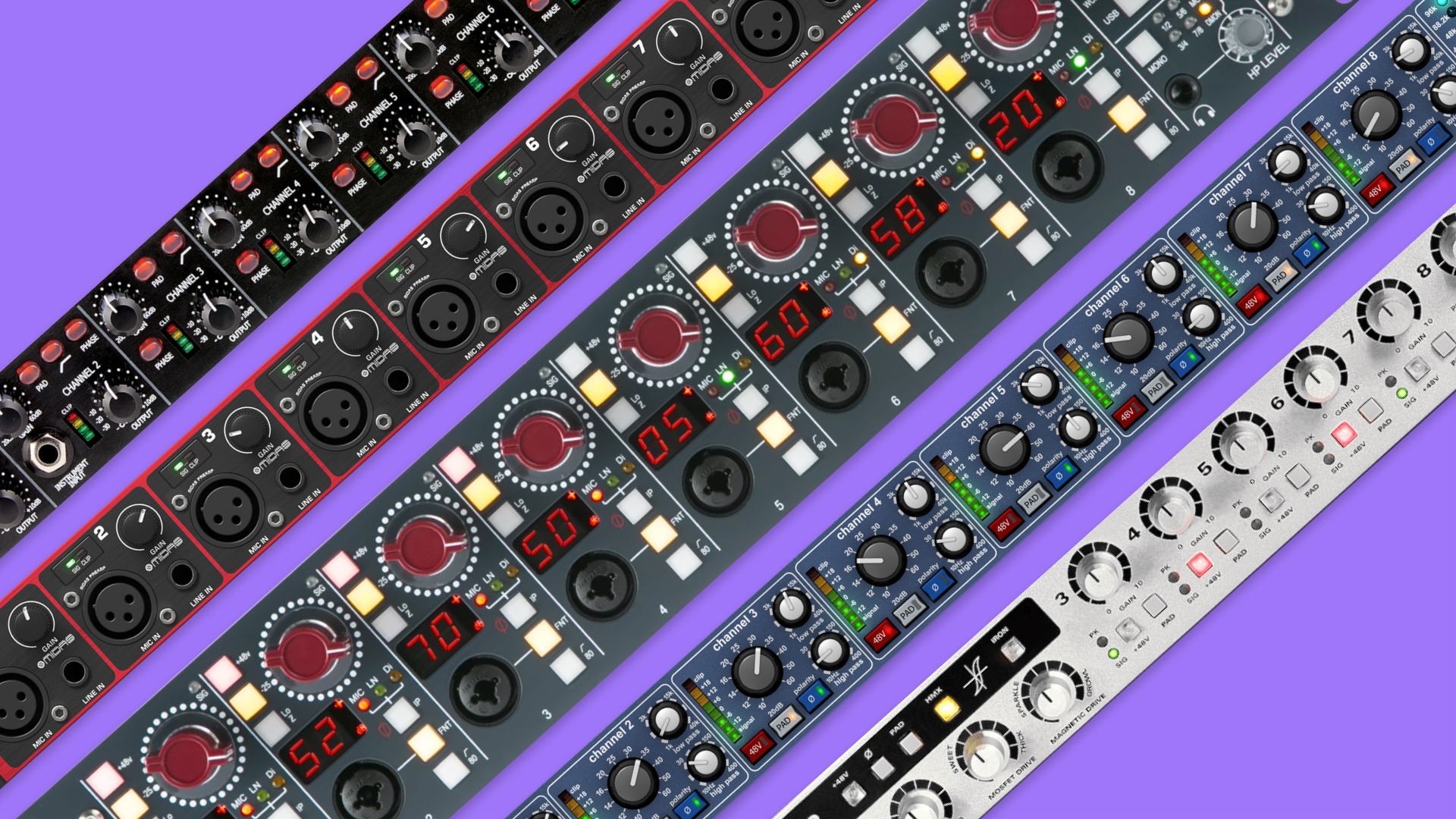
ADAT is a music tech tool with a history that dates back to the early days of digital home studios.
But despite its origins in the 90s, ADAT is still relevant to producers today.
If you’ve ever wished you could add channels to your home studio setup without buying a whole new audio interface, ADAT could be the solution.
In this article I’ll break down the term, explain how the tech is used and suggest five ADAT preamps to expand your rig.
Let’s get started.
What is ADAT?
ADAT stands for Alesis Digital Audio Tape. It’s a term that was first used to refer to the digital recording devices produced by American pro audio company Alesis in the early 90s.
The term refers to both the ADAT recording machines as well as the magnetic tape medium onto which they recorded.
While ADAT machines are long gone in home recording circles, one audio format that was developed to support them is still in use today.
ADAT Lightpipe is a digital audio protocol that was originally created to help send audio between multiple ADAT machines.
It’s an optical format, meaning that it’s transmitted over special fiber optic cables with Toslink connectors.
Since they carry digital audio, ADAT inputs make it possible for your interface to accept additional tracks from other hardware that converts analog signals to digital.
ADAT inputs make it possible for your interface to accept additional tracks from other hardware that converts analog signals to digital.
How to add channels to your audio interface with ADAT
Many of today’s best audio interfaces include digital I/O over ADAT, S/PDIF or AES connection.
This makes them expandable beyond the number of analog inputs or outputs you can connect to the interface itself.
All you have to do is attach an external preamp or converter with digital I/O and sync the sample rate and bit depth of both devices.
ADAT can carry up to 8 channels of audio at 24 bit / 48 kHz resolution.
While that may be enough for most producers, higher sample rates are possible using a technology called S/MUX.
S/MUX sample rates require multiple Lightpipe cables to transmit all 8 channels, so make sure your interface has enough digital I/O if you’re planning to use ADAT in this way.
To keep the devices in step, ADAT gear can be synced to the host interface using a dedicated Wordclock cable or a synchronization signal carried over the Lightpipe connection.
Finally, many ADAT interfaces offer only digital outputs. Most producers typically need to expand inputs rather than both sets of I/O. Keep that in mind while shopping.
Hot tip: If you need help understanding if your audio interface is compatible with ADAT, head over to our guide to choosing an audio interface for more information.
The 5 Best ADAT Preamps for Home Studios
ADAT can carry up to 8 channels of audio at 24 bit / 48 kHz resolution.
With the background info out of the way, here are the five best ADAT preamps for home recording.
1. Audient ASP800
The Audient ASP800 is a high quality 8 channel preamp with ADAT outputs.
In addition the crisp preamp character the brand is known for, you’ll get 8 channels of rock-solid conversion.
That quality comes at a price, so this option might be less appealing to those on a budget.
Hot tip: If you’re just looking add additional preamp types using your interface’s existing line inputs, a standalone unit without digital I/O might do the trick. Head over to our guide to the best affordable mic preamps to see the options.
2. Behringer ADA8200
Behringer’s ADA8200 is one of the most cost-effective units out there to expand your audio interface.
This no-frill device provides solid audio quality and ADAT I/O with clean preamps that get the job done.
If you’re looking for the best bang for your buck, the ADA8200 is worth a look.
3. Midas XL48
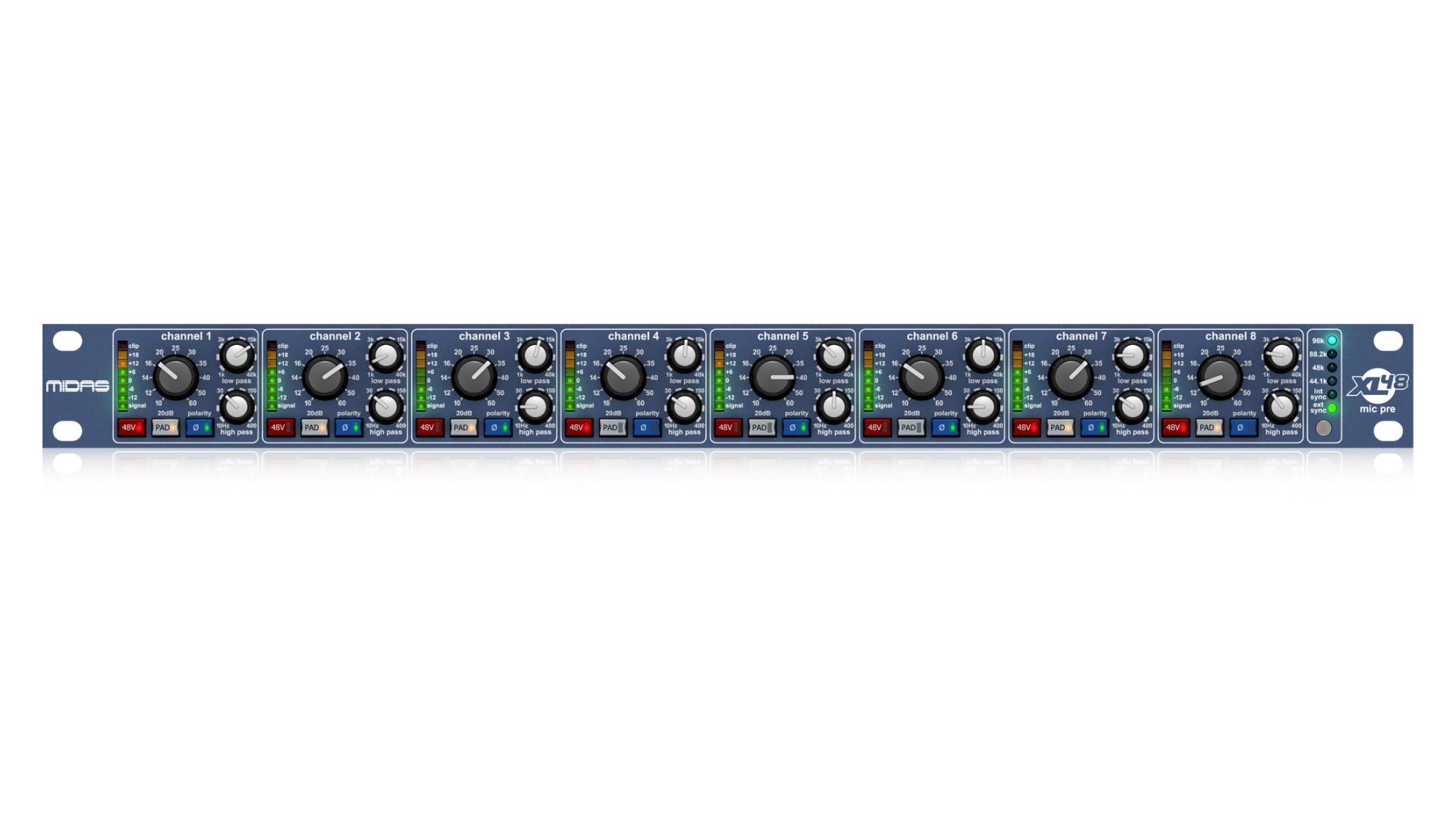
Midas is known for its pro-quality live sound equipment. You’ll find their digital consoles and analog mixers in premier live music venues around the world.
Their XL48 preamp packages eight microphone channels together with analog to digital conversion over ADAT and AES.
In addition to clean, powerful preamps you’ll get variable high and low-pass filters and phantom power on each channel.
4. AMS Neve 1073OPX
The Neve 1073 preamp is one of the most enduring designs in music production history.
The Neve 1073 preamp is one of the most enduring designs in music production history.
If you’re looking for the best ADAT preamp money can buy, the new AMS Neve 1073OPX delivers eight channels of classic 1073 sound with precise digital gain control.
With performance features like analog summing and high sample rates, the 1073OPX is aimed at professional engineers and studios.
5. ART TubeOpto 8
ART’s Tube Opto8 ADAT preamp claims to squeeze eight class-A vacuum tube preamps into a single rack space.
Whatever your feelings on prosumer tube gear, this device offers a unique take on the 8 channel ADAT format.
Its output trim control can be used to drive the tube stage harder, producing interesting saturation effects.
If you’re looking for an ADAT expander with a bit more color to offer, the ART TubeOpto 8 is worth considering.
ADAT with destiny
ADAT may seem like a technology the music production world has left behind.
But it still fills an important niche in home and project studios that need to expand their available I/O.
If you’re scaling up your recording sessions beyond the capacity of your audio interface, try the devices on this list to get the job done.
Gear guides, tips, tutorials, inspiration and more—delivered weekly.
Keep up with the LANDR Blog.


